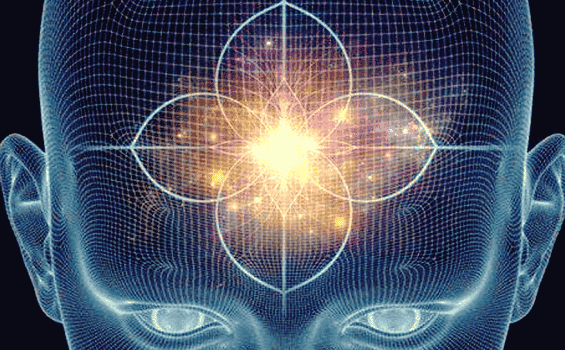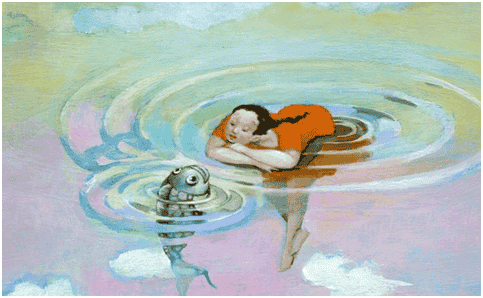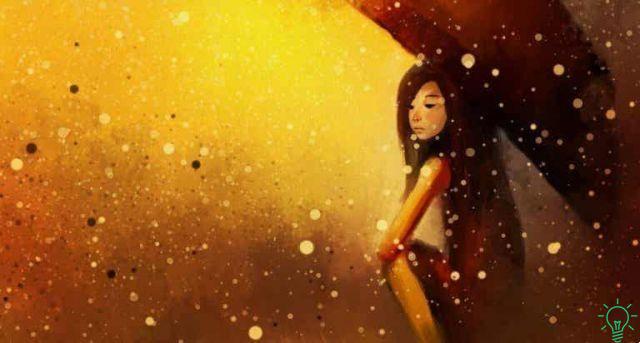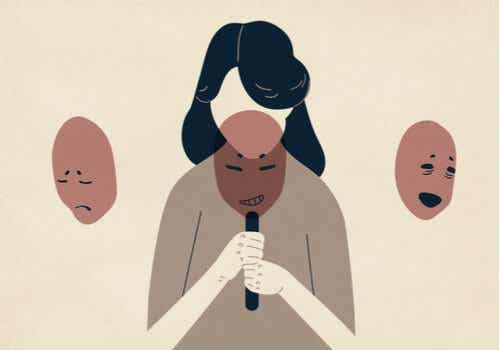
Written and verified by the psychologist GetPersonalGrowth.
Last update: February 19, 2022
The pituitary and pineal glands regulate a large part of our hormonal processes. They constitute that small center of power in the brain that Descartes called the seat of the soul. Likewise, this sophisticated chemical laboratory mediates basic processes such as rest and relaxation, aging, thyroid balance, etc.
Whenever we look for information on these little glands it is easy to find multiple references that come from the spiritual world. This is not surprising. This "third eye" is related by many to the most magical and intuitive sphere. In addition to this energetic and spiritual universe, these structures are connected by cycles of light and dark.
They call them the master glands or even the third eye. The pituitary and pineal glands constitute that factory that regulates hormones to ensure balance and well-being.
The human being holds his own biological rhythms in tune with nature. The sunlight configures that channel that stimulates the small nuclei of the brain. The pituitary and pineal glands are like conductors. They give the perfect rhythm to our growth, sexual maturity, temperature, and even our emotions.
Any small imbalance directly affects our well-being.
The pituitary and pineal glands: functions
Despite being very small (just under 8 cm) they receive a large supply of blood flow. This makes us understand that their relevance is crucial. We cannot overlook another detail: they are very sensitive to our lifestyle.
Let's see in detail the function of both.
Pituitary gland or pituitary gland
A fascinating aspect of this gland is the way it connects with its surroundings. Depending on the information it receives from the senses and from the thalamus, it produces a series of hormones that allow it to adapt and react much better to external stimuli.
- The pituitary or pituitary gland facilitates social connection and helps to react to dangers.
- Promotes the release of oxytocin to strengthen bonds.
- It stimulates the production of adrenal hormones thanks to which it is better to withstand stress.
- It works in conjunction with the hypothalamus which regulate emotions and memory. In turn it is influenced by the pituitary gland. Thanks to this union, what we think and perceive through the senses translates into an emotional state.
On the other hand, it is important to emphasize the involvement of this gland with certain biological processes:
- Regulates the metabolism.
- It secretes follicle stimulating hormone (FSH) and luteinizing hormone (LH) which release estrogen, testosterone and progesterone.
- It stimulates the production of prolactin, which is necessary for the production of milk.
- Average between the production of melanocytes for skin pigmentation care.
- Stimulates the release of human growth and development hormone.
The pineal gland
The pituitary and pineal glands share some functions, as well as being very close together. However, it has always been the latter that aroused the greatest interest from a mystical and spiritual point of view. It will be because of the shape that looks like a tree, because of its fragility or because it needs darkness to function at its best.
By pineal gland fragility we refer to the fact that once it reaches adolescence, it begins to reduce its activity. Often when it arrives it already begins to show signs of calcification. Its sensitivity to the environment, nutrition, toxic environmental agents and our lifestyle can alter its proper functioning. Let's see below what are the processes regulated by the pineal gland:
- Regulates the circadian rhythm and induces sleep.
- It needs darkness to secrete melatonin.
- It is key in sexual maturity.
- An alteration in the pineal gland can cause seasonal affective disorder and depression.
How can we best take care of the pituitary and pineal glands?
Interest in these two glands is currently on the rise. In addition to the mystical and spiritual field, there are numerous studies in this regard, aimed at the general public. For example, in the Journal of Pineal Research very interesting, as well as useful, studies have been published on this "third eye" with endocrine functions.
These structures are a clear example of how the endocrine system is at the center of a person's behavior and character. In fact, the impact of endocrine system diseases such as hypothyroidism or hyperthyroidism is well known: they not only alter the metabolism and, therefore, the weight, but also the mood and night rest.
Here then is that it is never too much to know how to take care of these structures. The pituitary and pineal glands will thank us.
- Follow a diet that is as natural as possible, free of pesticides, dyes, preservatives ...
- Organic food consumed raw reduces the calcification of the pineal gland.
- It is necessary to increase the intake of vitamin D, A and the vitamin B complex and minerals such as magnesium or manganese.
- It is ideal to follow the cycles of nature as much as possible. If we lived in tune with the hours of light and rested with the dark, these glands would be grateful to us.
- It is recommended that you reduce or be careful of light exposure from electronic devices.
To conclude, we point out that between these two glands, the most important is undoubtedly the pituitary or pituitary gland. It is the most important endocrine structure because it regulates practically all the processes of the organism. It is worth taking care of and for this purpose it is enough to adapt your lifestyle to the natural development of the day.


























